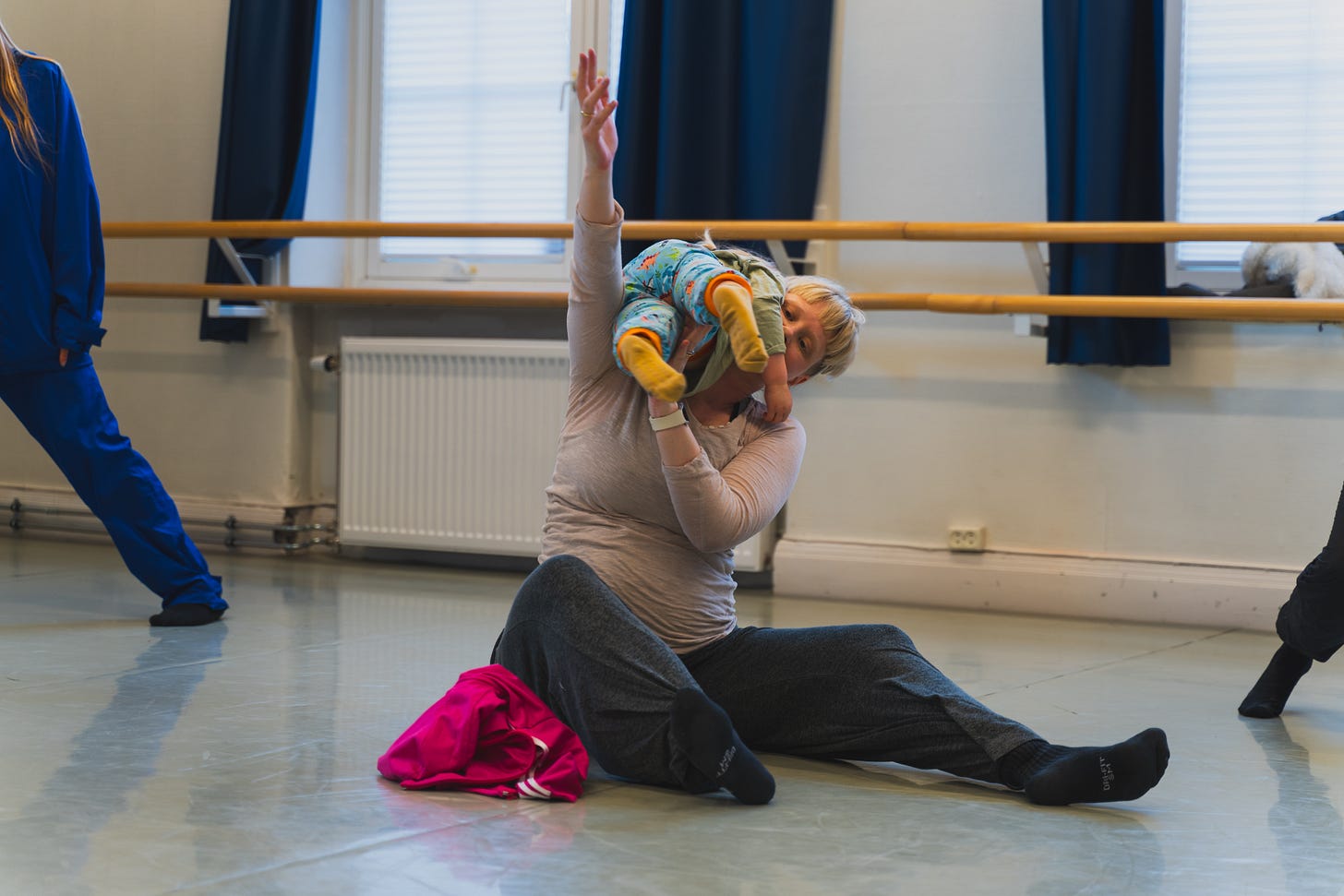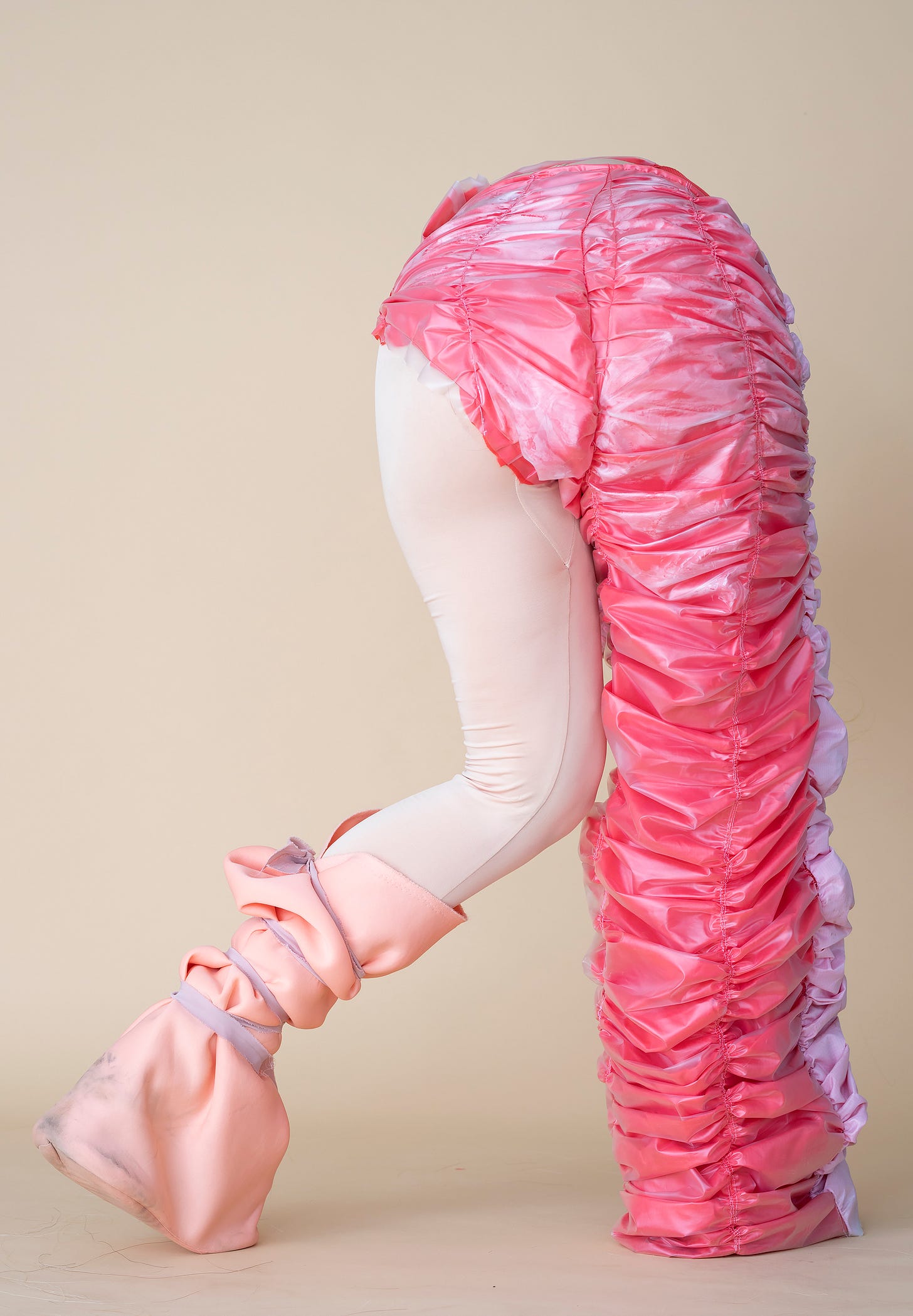
I am thrilled to share the work and words of Mari Bø in my seventh artist-mother interview. From my first encounter with Mari’s work as graduate students together at Listaháskóli Íslands (Iceland University of the Arts), I found her artistic practice compelling due to how it moved my mind in equal measure to how it shifted my perspective on the capabilities of the human body.
Her work is physical and confronting. It questions social and cultural conventions with uncanny interpretation through material investigations and performative gestures. The interview that follows is as energetic and enlightening as the contortions she weaves explicitly and implicitly in her brilliant work.
9 questions on art making and motherhood
1 In a sentence or two define your art practice.
I am an interdisciplinary artist working with movements, sounds and textures connected to the body – my practice is closely connected to exploring the nuances that exist within my own body. I am interested in exploring concepts of gender and sexuality, and how gendered norms and ‘codes of conduct’ can influence how we as a society perceive and police bodies. All my work is centered around experimenting with different types of movement.
2 How do you carve out time for your art practice alongside motherly obligations?
In Norway where I live, we have very good childcare that is affordable. I went back to work when my daughter, Arja, turned 7 months (at this point her father had his paternal leave until she turned 1 year and started kindergarten). When I first started working again, I found it very hard to somehow balance the work with family since I usually preferred to work both during daytime and also in the evenings, but I quite quickly found myself too tired to do any work in the evenings.
It has gradually adjusted itself so that I mostly work during daytime when Arja is in kindergarten, and then I spend afternoons with her. I have also been able to do a residency working with puppetry at the Nordland Visual Theatre, and it felt really good to know that she was happy with her father, and although we missed each other, I was able to have some time to fully immerse myself in my practice. I think that that is what I was missing most about my work situation right after becoming a mother– being able to sometimes disappear into my work and just continue until it feels finished, without having to stop early in time to pick up from the kindergarten or go shopping for groceries.
When I did my master’s degree (in Iceland) I had all the time in the world to just dive in and explore and immerse myself in whatever I found interesting, and then coming back to Norway during Covid, and then becoming a mother – it felt like I lost myself for a while, and really lost track of who I was as a person and as an artist. Arja was naturally really dependent on me in her first months of life, and when she gradually grew older and I could have more “freedom”, it was hard to actually leave her.
But this is a constant adjustment, figuring out how much she needs me, how much I need her and how much we both need space to do our own things. I have also lately tried to let my family life and my art practice somewhat overlap – I brought Arja to one of my dance lessons in improvisation, and we had an amazing time dancing and laughing together. When I first had her I think I felt that I needed to control the situations I brought us into, but I am finding that it can also be beautiful to include her in my work when the opportunities arise.
3 What project or body of work are you currently developing?
I am currently working a lot with applications and future project developments, since I am almost 8 months pregnant and will soon be on maternity leave. The last years I have also been very fascinated with weaving and looms and have been developing a project called “Kroppsvev” (direct translation would be “body loom”, but “vev” in Norwegian can mean both loom and also bodily tissue).
In “Kroppsvev” I am working on exploring movement within fixed materials, using weaving and woven material as an entry point into discovering new forms of movement. I am also interested in the connotations to “female” work that exist in weaving. Many of my female ancestors worked with looms, but never really thought of themselves as artists, I find myself connected to them through this project.
In “Kroppsvev” I am both interested in the movement that exists within the fabric and the different patterns of the fabrics, I am also experimenting with weaving in some wire thread that allows me to create shapes and structures in the fabric. “Kroppsvev” is an ongoing experiment that hasn’t been explored too fully yet, so the options are many and I am excited to see where it takes me. Even though this is textile work, I am very concerned with how it ties in with my practice within movement, and I have been questioning and wondering about my role within the performance, dance- and choreography field. I would love to explore the possibilities of working with weaving also as a performative gesture, inviting people to come and see me weave, and then see what happens.
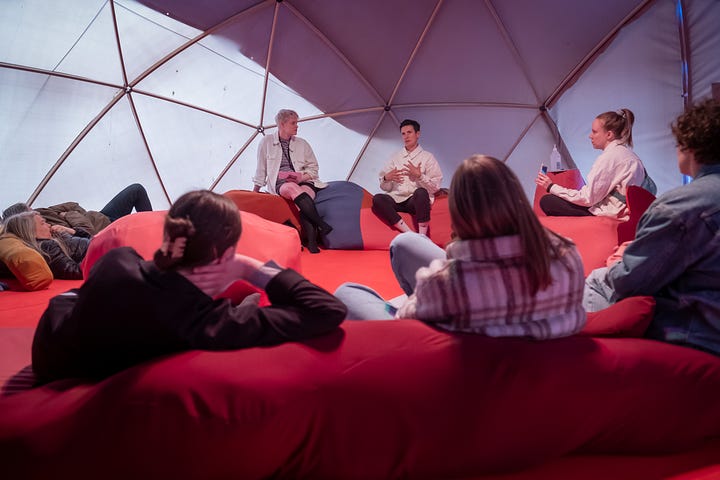
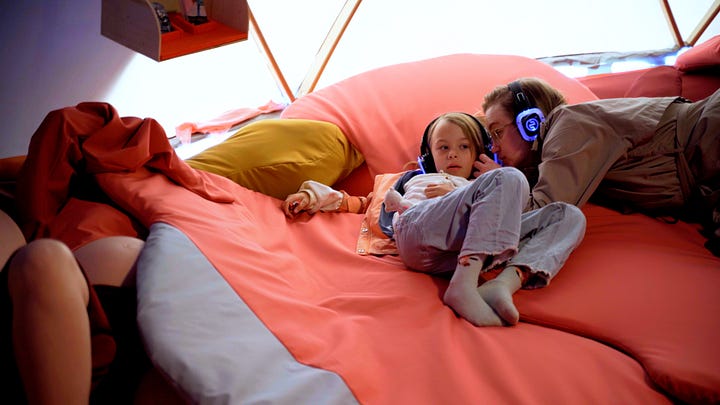
I am also working on a Nordic group project called “ERROR:gender” and a longer durational performance called “ENE” (“ONE”). They were both recently funded and will be happening after I finish my maternity leave, summer/autumn 2025. “ERROR:gender” is a group installation consisting of both performances, lectures, conversations, music, video works and movements, where 16 female and queer practitioners will contribute with their own practices into the space. It will be shown in Reykjavik (Iceland) and in Muhos (Finland) during 2025. The goal of “ERROR:gender” is to bridge the gaps between people in conversations about gender, sex, sexuality and bodies, using art as our main tool.
“ENE” is more of a solo-performance, where we are six artists from different fields that are collaborating on making a bodily scenography that will move around in public space. The scenography will be worn as a sort of costume made for my body, I will be moving around in it/with it and the movement will also generate and play sounds. The idea is to create a new type of body in public space, that is both a bit abstract and strange, but can somehow contribute something else into the public discussions about beauty and “public bodies”.

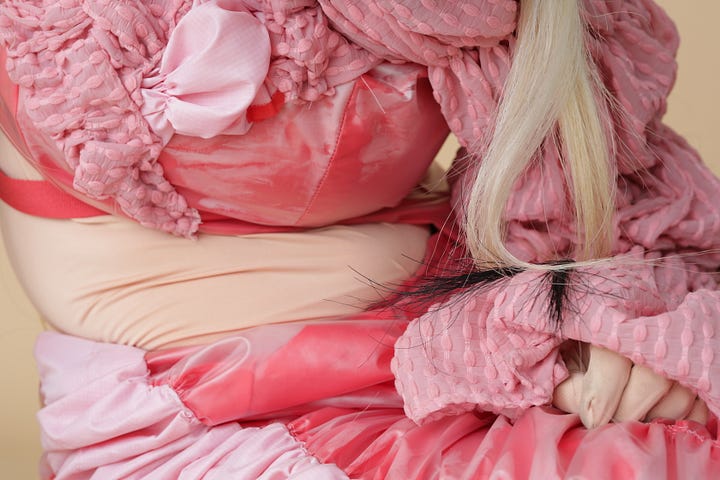
4 Describe your studio space and working environment: the location, ambient sounds, etc.
I am based in Tromsø, in Northern Norway, and have my studio at Kysten Fylkeskultursenter, a building with multiple artist studios that are subsidized by the county.
The building was built in 1923 as a hospital for children suffering from bone tuberculosis. It has a dark past where the children living there (without their parents) were strapped to their beds and abused, some of them even spending inordinate amounts of time in full body-casts of plaster, and all of them suffering under very strict discipline administered by the nurses. One of the artists who has his studio there today spent 7 years there as a child, from 3 to 10 years of age, and he has spoken openly about the abuse he suffered as a child.
Today, the building is thankfully being used as a space for artist studios and walking the hallways I myself cannot feel anything of the previous pain and suffering that was felt there. It has become a tranquil building, with a lovely and lush garden outside (in the summertime), and filled with interesting people doing important artistic work. It is a quiet space and even though I have a quite tiny studio, I still have room for my loom and a desk and some materials.
I have painted the walls, decorated with photos of my own work and the work of artists that inspire me, and I have a lovely window overlooking the back yard. We have a coloring kitchen, a dark room, several workshop areas for graphic work and ceramic work and a larger project room that you can book free of charge if you are working on bigger projects. We all work different hours, and me having to be up early and leave early, matching the time schedule with the kindergarten, can often go days without seeing anyone (most people work later in the day). If you leave your door open however, there are bound to be some people dropping by to say hi, and I love the combination of silence and artistic conversations.
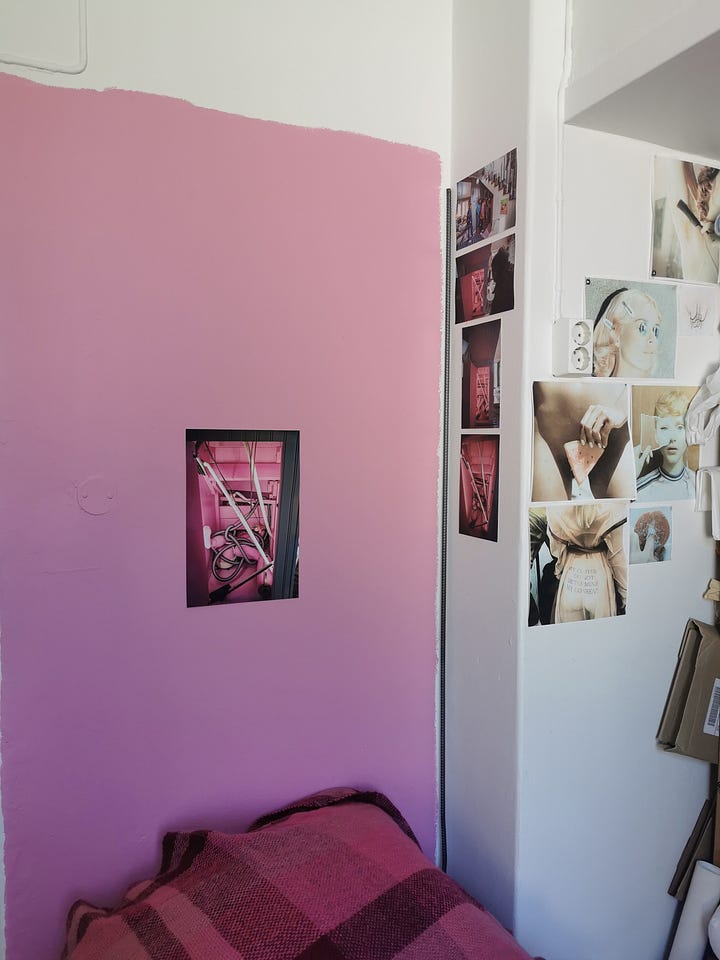
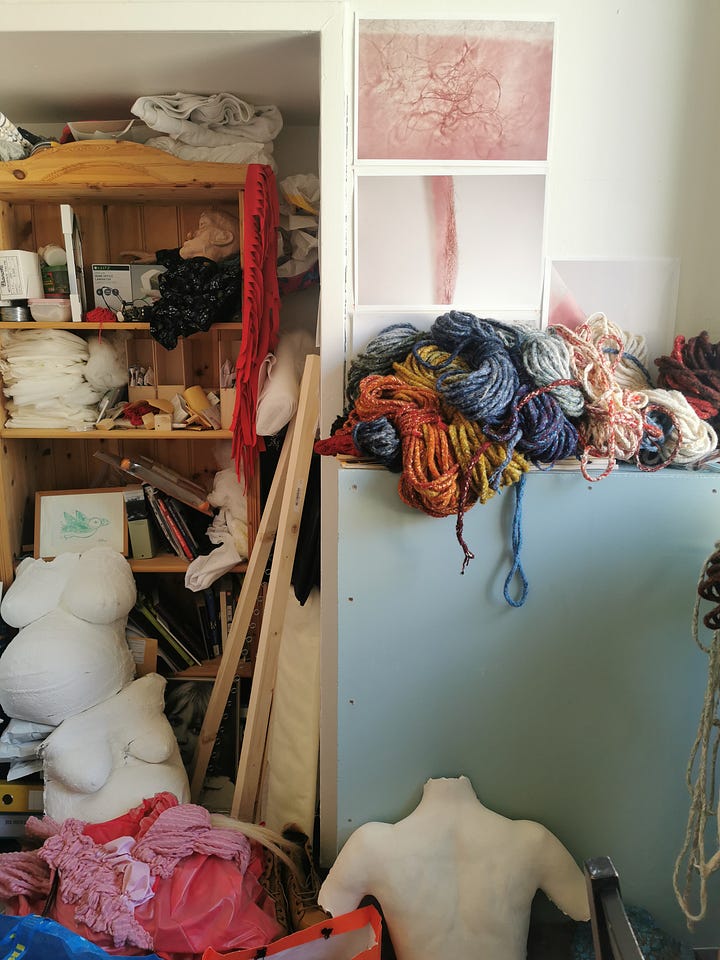
5 Where are you currently finding inspiration?
It varies a lot these days, pregnancy has been tougher the second time around with no time to rest, a lot of lifting and having to get in and out of bed in the night either to go to the toilet or to help Arja. At times I find myself totally uninspired. I am used to using my body in different ways and being able to use it in my practice, but the aches and pains are really holding me back, and I am often getting frustrated and sad by how little my body seems capable of (expect of course the producing of a new human, which I am very thankful and happy for!).
However, when I put that aside and really think about it, I am finding inspiration in exploring movement in different formats. Thinking about how movement also exists within objects and sculptures allows me to keep exploring and researching, expanding the boundaries of my own practice and keeping myself on my toes. It feels like there is endless potential in this venture. I started exploring this with the project “Bodnái”, which was a collaboration with the sami dance collective “Bárrogiera” for their project “Mii Leat Mii Gávdnot”.
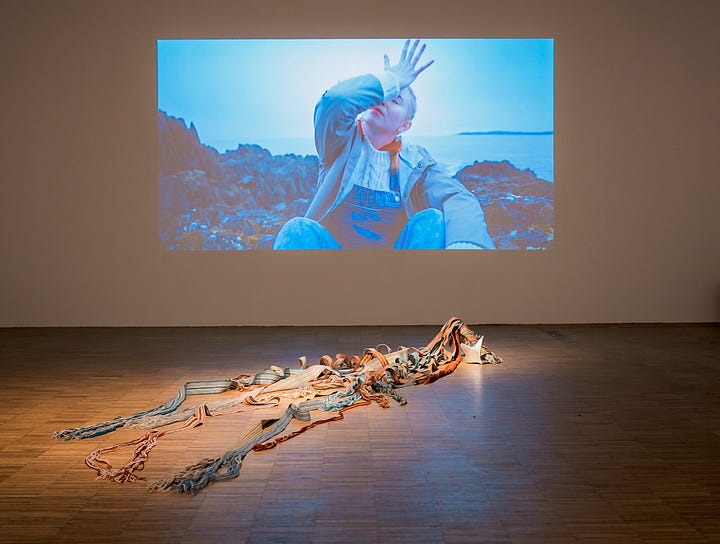
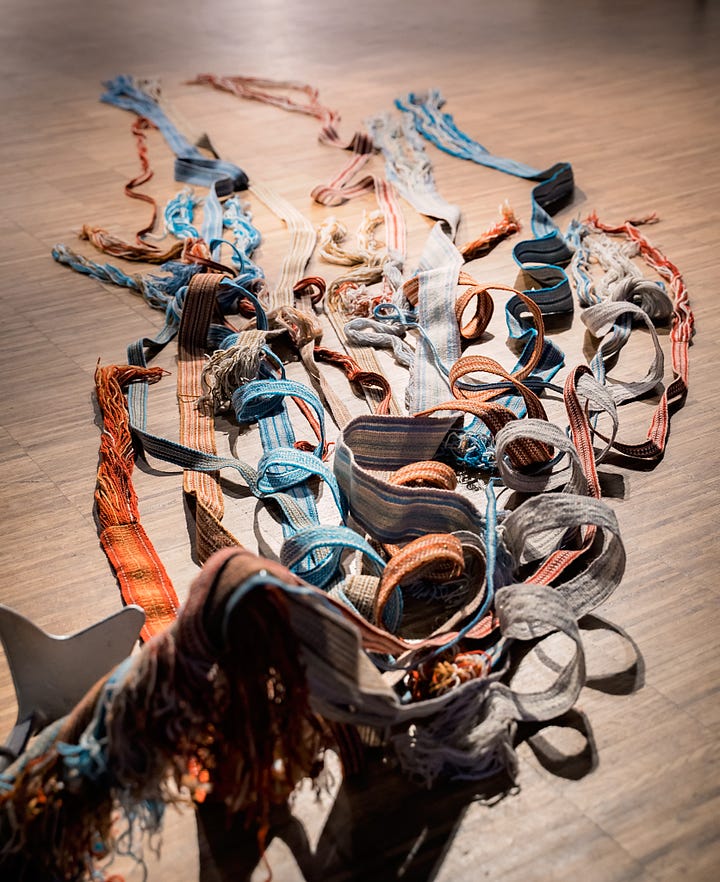
6 How has motherhood impacted the evolution of your vocation as an artist-mother?
I don’t think I ever really thought too much about motherhood before I became a mother, perhaps fleetingly and superficially, but never in depth about what it really means to be a mother or a parent. My work has always been heavily influenced by my private life, but never so much as since I became a mum. I just find it mind blowing that so many people actually go through pregnancy, birth and post-partum – how is society not more concerned with talking about these things?
It was just the most intense, mindblowing, crazy, scary experience and it totally changed everything about my life, and yet it is considered the most mundane and normal thing…?? To me, the pregnancy, the birth and the post-partum changed it all: my body, my bodily functions, my thoughts, my feelings, my everyday life, my plans for the future, my wants and needs – it all shifted, and it happened within the span of a year. And probably there are a lot of us out there feeling this shift, yet we don’t really talk about how it impacts us, at least not in the ways I want to be talking about it. There is nothing that allows me to feel as connected to another human, as much as knowing that they have been through that process. Although I assume this is different for everyone, personally, knowing someone has gone through birthing or raising or caring for a child gives me an instant feeling of fellowship.
Since having my daughter has such a huge impact on my life, it naturally also impacted my artistic work. I really want to explore these feelings through my art, as using my art to understand things in my life comes very naturally to me. I have been thinking a lot about my own mother and her mother and their mothers going back in generations, wondering if they ever felt the same things I did? They never mentioned it, but some parts of their experiences had to be somewhat similar, right?
I have explored motherhood mainly through movement and also restrictions or lack of movement. In one of my recent performances, Ofin Örlög, I made an abstracted loom, connecting a plaster cast that my mother made of her belly when she was pregnant with me 35 years ago, with a plaster cast that I made of my own belly when I was pregnant with my daughter 3 years ago. These two bellies were installed in the loom, and then I performed in it by weaving myself into the loom until I could go no further, and then retracing my steps to weave myself out again, before exploring a different route.
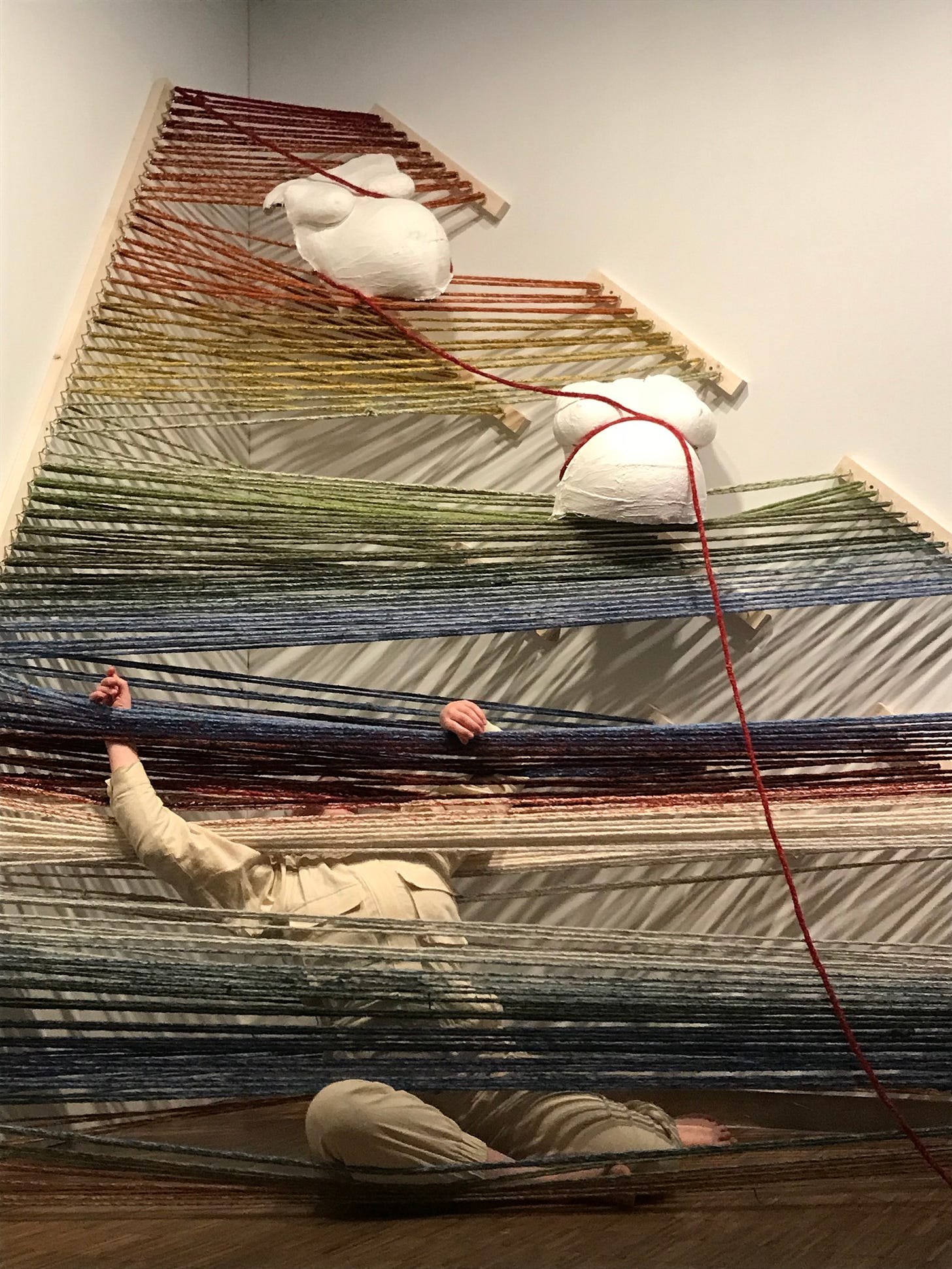
Being “stuck in something” is a concept I have explored previously through the work “Skorða / Styrkur” and “Constructing/constricting her”, and as a performance concept it makes even more sense since I became a parent – being truly stuck in something and trying different ways of getting out. It is not about something being good or bad, I love being a mother, yet I constantly find myself “weaving” and thinking and worrying and wondering about something until I become stuck in it.
The thoughts and feelings leave me no room to do anything or move around, and I am constantly working to resolve different ways I am feeling stuck, figuring out a different route, only to get stuck in it again in some other way. As a parent, I sometimes feel like I am constantly worried about doing things wrong or not being there enough, and these thoughts can become quite restricting. I am laying these restrictions onto myself, limiting my own range of motion, though that is not the intention. These feelings and thoughts are things I want to explore further in my art practice, and also things I look for in other artists’ depictions of motherhood – am I alone in this?
7 What female artists do you find intriguing and important to reference in your own work?
There are several artists that I am currently intrigued by. Although I don’t really know how much my work references them, I am currently very inspired by these artists: Renee Cox (I am super inspired by her work “Yo mama”), Monika Mørck (especially her work “Dagbokbroderi (Diary embroidery)”). Malin Bülow (I really enjoy how she works with movement and sculptures and performance. Daisy Collingridge (I love how she works with bodily shapes). Elin Margot (especially her work “Carnal Appetite”).
Brith Hennie Halvorsen (I love her work with wool), Alison Dollery (the way she depicts skin and human tissue, it is so familiar and especially after I became a mother and saw how my own skin changed texture and form). Alexandra Butler (the softness in the bodily ceramics speaks a lot to me). Ingrid Fiksdal (I really like how she works with choreography and performance art). Signe Becker (super interesting work on the body, and I enjoy all her scenographic work).
Tracey Emin is of course a constant inspiration and source of wonder – I recently saw her work displayed in the new Munch museum in Oslo, and it was divine. I also really enjoy her enormous mother sculpture outside the museum, it speaks to me and my experience becoming a mother.
8 Future dream project, collaboration or exhibition?
I mean, collaborating or learning from with any of the above would be amazing. On a general note I am really interested in being in more group shows, where my work can be in dialogue with other artists’ work. I usually work on my own projects and invite others to join. This means that I do a lot of administrative work, writing applications, making production plans, doing accounting, which are important skills to learn, but they are also tiring and somewhat draining. It would be really nice to be invited into someone else’s exhibitions, especially in a group setting and in relation to an exhibition space for visual arts. Since my background is so much in the dance world, I tend to end up showing work in more of a dance/performative setting, and I actually would love to work a bit more in the visual arts scene.
9 Final thoughts on being an artist-mother, anything more you would like to share?
I want to thank you for reaching out, for seeing my work and appreciating it. Sometimes I can feel like working with motherhood is somewhat “outdated”, it feels like the funding is hard to come by and that the foundations do not seem to care about the things I am interested in exploring.
I have sometimes wondered if motherhood is even relevant in the art scene anymore, but I always come back to the realization that it is essential. As a society, we don’t seem to appreciate motherhood, but everyone in the world has some connection to it, either through birthing or being born or both, and it is important to keep talking about how it affects and impacts us. Thank you for lifting this aspect of artist-life to the forefront and thank you for taking the time to explore it together with others.
Connect with Mari: Mari-bo.com + boe.mari@gmail.com




